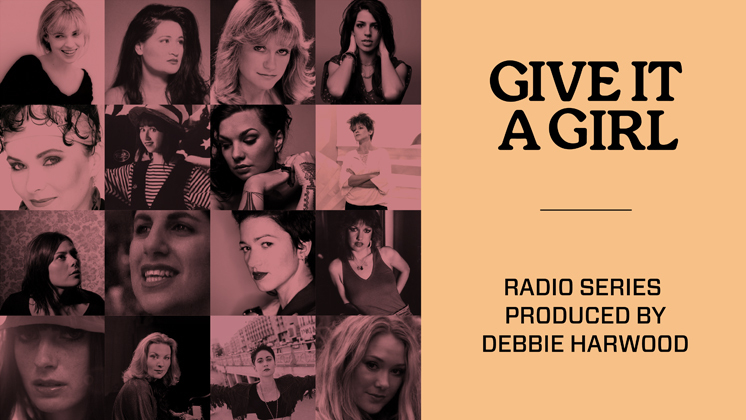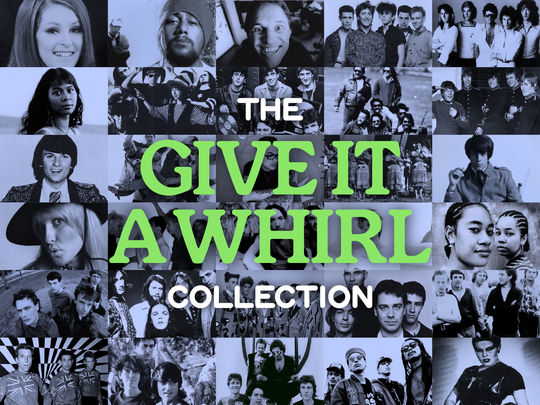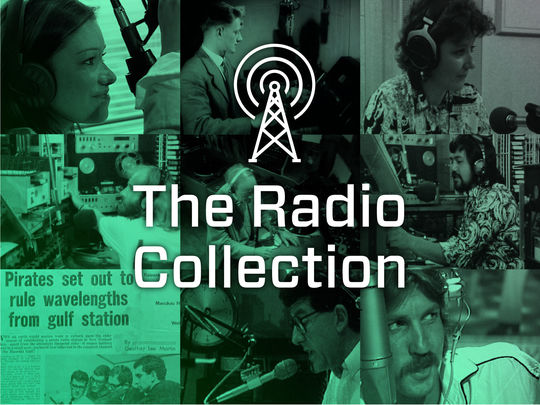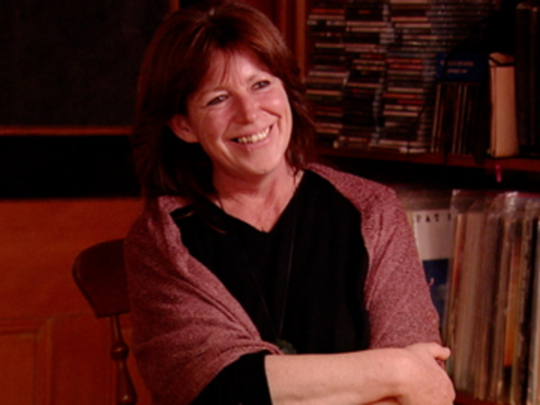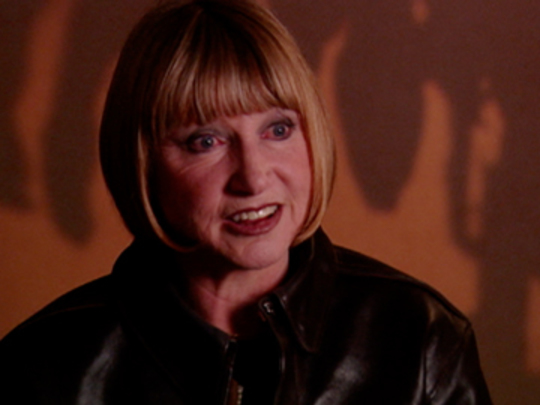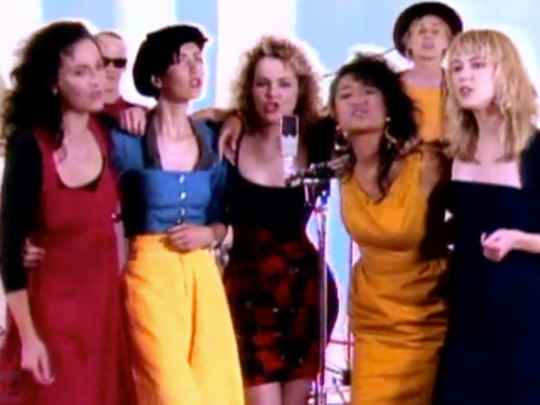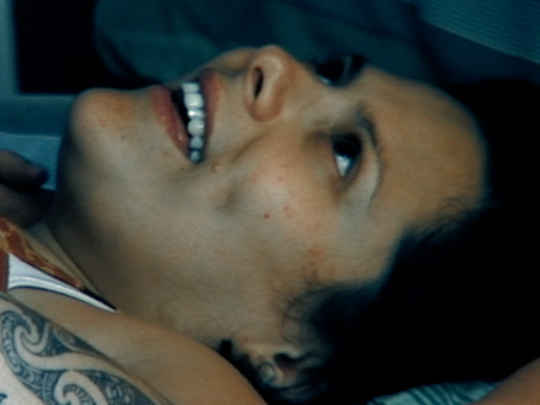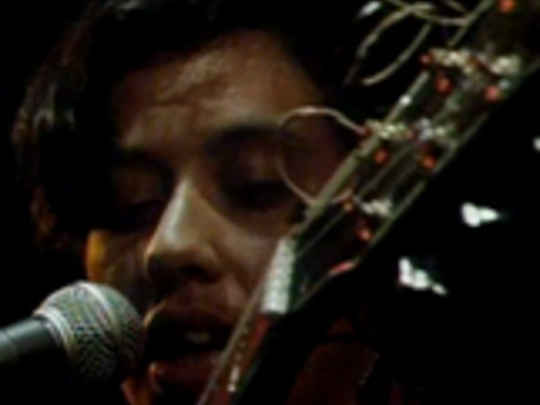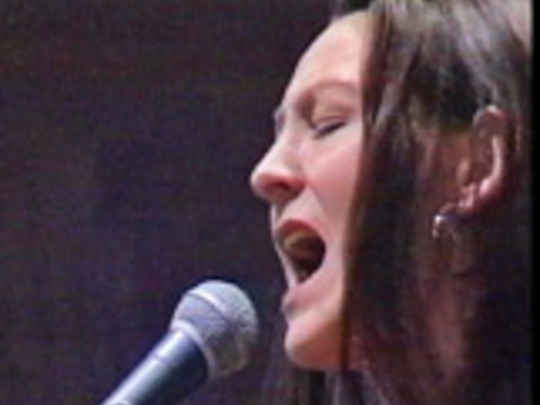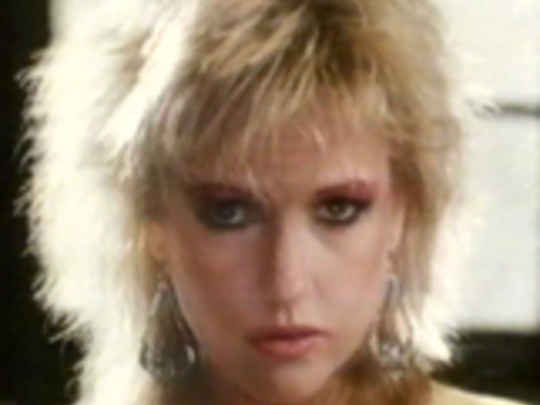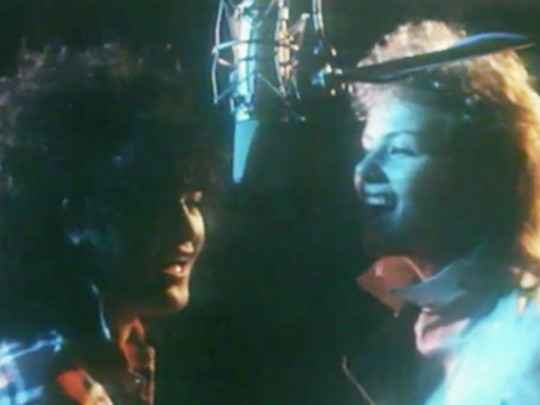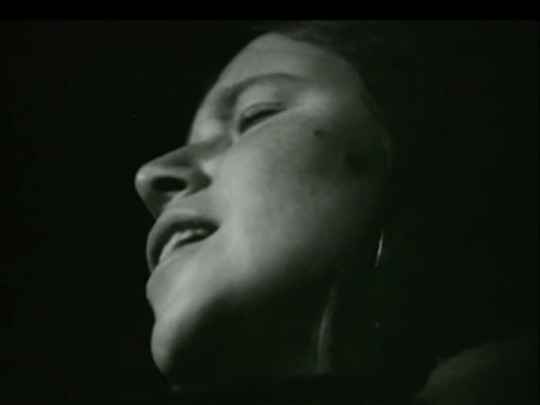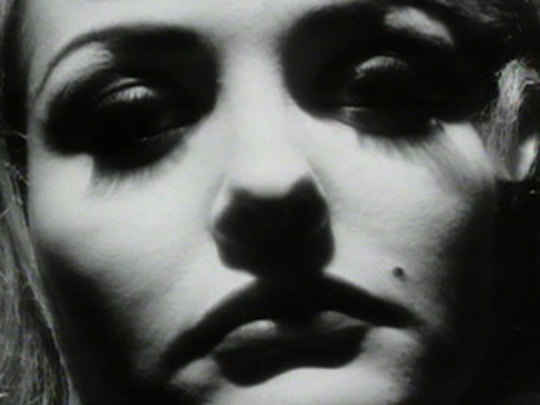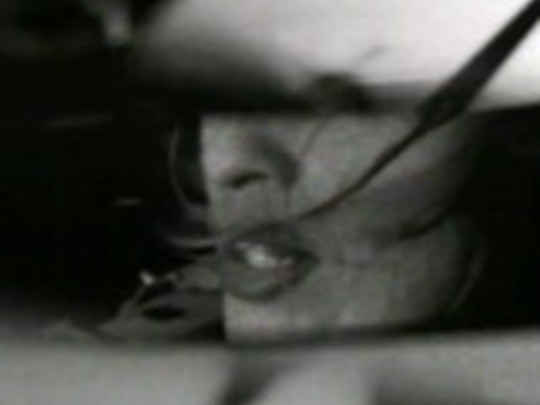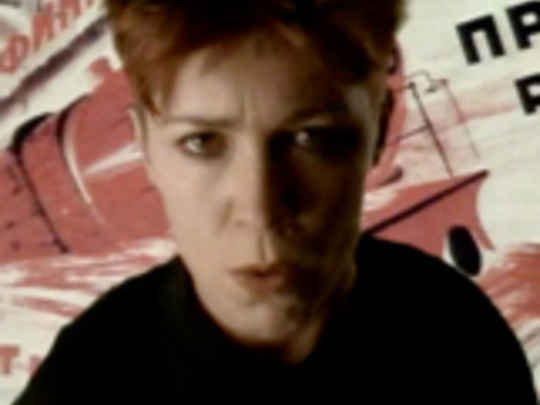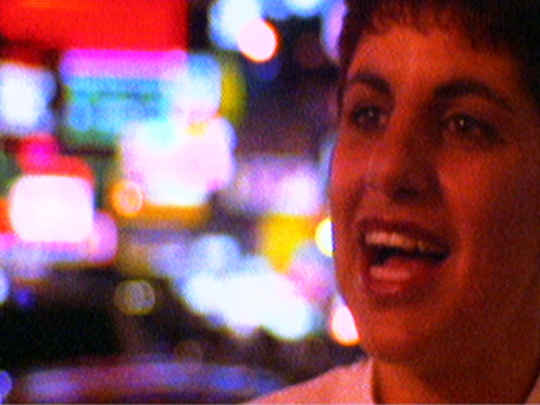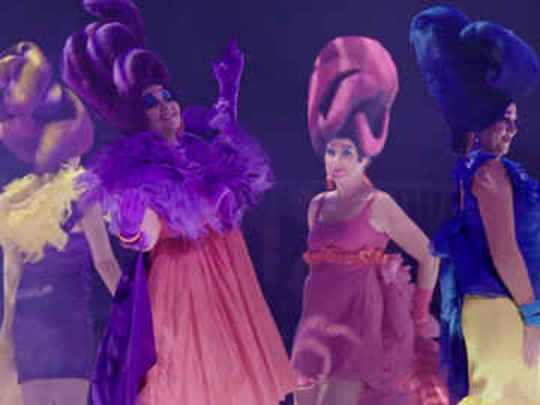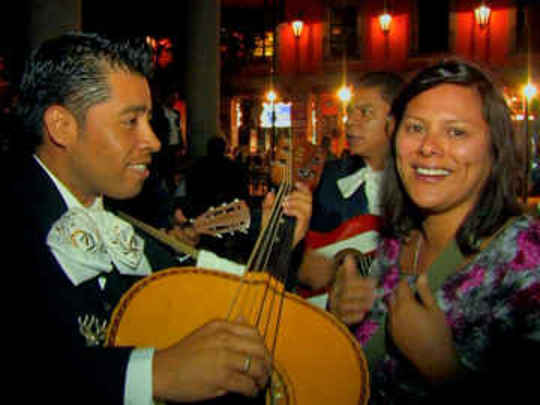Give It A Girl
Radio (Full Length Episodes) – 2007
Women Musicians, and Making Music in the 1980s
This piece by Debbie Harwood was first published as the introduction to Ian Chapman's 2010 book Kiwi Rock Chicks, Pop Stars and Trailblazers
There is a social conditioning, etched into our DNA, that means when a question is asked such as "name New Zealand’s top songwriters", our minds automatically veer into XY territory — we think of the men first. I do it, I'm as guilty as the next man: it's an old primal response. We would all say Neil Finn, Dave Dobbyn, Jordan Luck, Graham Brazier, Dave McArtney, Don McGlashan, James Reid, etc, first up.
But the truth is that the women writers in this country — like Sharon O’Neill, Shona Laing, Margaret Urlich, Annie Crummer, Bic Runga, Brooke Fraser, Jenny Morris, et al — have matched these icons in sales and in chart placements. It's just that sometimes we forget. And when you pit song against song in deft writing, the beauty of melody-against-chord and eloquent lyrics, gender becomes terminally redundant.
I have inadvertently become a champion for women singer-songwriters, not to wave the female flag or rant on bitterly about women being under-appreciated, but merely to restore balance. I am fighting human DNA programming here. New Zealanders should experience the joy of listening to these women's voices and songs, and the women deserve to have the opportunity to perform their works to appreciative crowds.

Singer/songwriter Sharon O'Neill, in 1978.
With much love and respect to our peers — the great male writers in New Zealand — they regularly get their dues and are oft revered, so they are already taken care of. So, to me, Kiwi Rock Chicks, Pop Stars and Trailblazers, Ian Chapman's book on New Zealand women in rock is more about honouring the great songs these women have written than anything else — 'Glad I'm Not a Kennedy', 'Escaping', 'Room That Echoes', 'Asian Paradise', 'Maxine', 'Lydia', 'Language', 'Luck's On Your Table', 'See What Love Can Do'… These songs all stand side by side in their impact on the history of New Zealand music, and side by side in their success and popularity. It's a reminder that there have been more than a handful of prodigious writers' songs gracing our airwaves and charts.
When I was a young person, women were outnumbered in the business by perhaps 100 to 1. The music awards were awash with lyrical testosterone. I loved it, as I'd had a deep mistrust of women ingrained in me by my self-professed misogynistic mother, so touring New Zealand with a bevy of blokes was a comfortable state. I liked being "one of the boys", and it took me quite a bit of adjustment to get used to the close and constant company of the other four women in When The Cat's Away: Annie Crummer, Dianne Swann, Margaret Urlich, and Kim Willoughby.
And on the road there is no room for bullshit or ego; life is tough out there for a musician. You slog it out: it is a myth that you just "make it". It takes enormous bottle and humility and talent to be a touring musician in a tiny country like New Zealand. I learned to love these women and their magic — my misogynistic leanings were soon righted — and I saw that gender is not an issue in the making of music.

The cover of When the Cat's Away's self-funded number one single from 1988.
But the attitude to women artists in New Zealand was highlighted for me when the TV series Give It A Whirl was made. It was then that I realised that our women are not given the same reverence that the men are — and it is much the same with food and painting — the men are deemed to be more "valuable" than the women. I have a theory on this: 95 percent of all music critics are male. In most cases they are people who wanted to be musicians (but often weren't) and ended up in the critic's chair. You see, these men aspire to be like their musical heroes, who are men; they certainly don't aspire to be Annie Crummer or Bic Runga. So the focus and emphasis is from their personal perspective.
I had anticipated Give It A Whirl with the same enthusiasm I had for Radio With Pictures in the early 1980s, and it started off brilliantly. The 1960s and early 1970s were full of women in miniskirts singing great songs: C'mon and Happen Inn featuring Dinah Lee, The Chicks, and more. But by the time we reached the week that highlighted Dragon, I realised that New Zealand’s first rock chick and iconic singer-songwriter, Sharon O'Neill, had been overlooked ... and then Jenny Morris ... then Ardijah, featuring Betty-Anne Monga... then When The Cat’s Away — the list went on.
As subsequent programmes aired featuring male-dominated acts, I presumed that the producers must have been holding back the women for one celebratory episode — why else would they be missing? These women had produced multi-platinum albums, released numerous number one hit singles, had played to sell-out crowds, produced huge radio hits, and above all were loved by the New Zealand public. I was so intrigued that I rang the director and was stunned to hear that all of their stories had been dropped from the series. That is not a definitive history of New Zealand rock'n'roll! I believed that this needed to be remedied. So I set about making a radio series called Give It a Girl – The History of Women in New Zealand Music. Someone had to do it.

Margaret Urlich (in checkered outfit) in When the Cat's Away. From left Dianne Swann, Debbie Harwood, Kim Willoughby, Urlich, Annie Crummer. Photo credit: Paul Ellis.
Margaret Urlich went three times platinum in Australia with her album Safety in Numbers, which featured her number one hit 'Escaping'. She has sold more than 400,000 albums in her career. I saw the charts in Australia at the time: Margaret rubbing shoulders with Midnight Oil and John Farnham. She had been big in New Zealand with Peking Man, and even bigger as a solo artist and with When The Cat's Away, then repeated her success on an even greater scale in Australia. Between them, Jenny Morris and Margaret Urlich have sold over 900,000 albums. It occurred to me that New Zealand women singers/musicians have enormous public appeal but little respect from the industry, which has been reflected in the books written and documentaries made. The public, however, love them!
The New Zealand rock'n'roll road has been an interesting one, and we only have a 50 year history. The singer-songwriter emerged strongly here in the 1970s, which saw a crossover between traditional radio and music recording, and a more anarchic approach. Radio New Zealand still had large recording studios in Wellington, where radio plays, orchestras, soundtracks and albums were recorded for broadcast. Music television was being produced with young singers and dancers being groomed and trained within the TVNZ structure. Programmes such as 12 Bar Rhythm 'n Shoes were being produced, and much of radio and television had a 'cabaret' approach. There were in-house producers in radio and record companies, and musical conservatism was rife — excepting a small vessel which, from 1966-1970, had dropped anchor out in the Hauraki Gulf and began broadcasting New Zealand rock! Once onshore and legit, Radio Hauraki continued to keep New Zealand music on life support while it battled to survive.
By the mid-1980s, radio stations had changed their formats, employing American consultants and following the charts and airplay of American magazine Billboard. FM radio and compact discs were introduced with much chest-pounding, and the advent of the big American over-produced songs began. New Zealand’s pop/rock songwriting sensibility, which was organic, melodic and lyrical (and played by actual musicians), now had no medium. For a while "the New Zealand sound" was silenced, and only bands that made the adjustment to programmed/sequenced recordings and overblown production survived — and even then, most New Zealand recordings were rejected by radio.
In the early 1980s, the pub-touring circuit that had been continuously circumnavigated by the great pop/rock bands of the late 1970s and early 1980s (Hello Sailor, Dragon, Blam Blam Blam, Hip Singles, The Mockers, Big Sideways, Citizen Band, etc) wound down as the DB and Lion hotels were sold off. Most of the bands were left in debt. As punters replicated stamps on their wrists outside the venues and climbed through toilet windows to avoid a door charge, it was clear that they didn't realise (or possibly care) that it was the bands who took the financial risk, paying for all touring and marketing expenses, their only revenue being the few dollars they gathered at the door.
Auckland, in the early to mid-80s, had The Gluepot, the Esplanade, The Windsor Castle, The Rumba Bar, The Reverb Room, the Mon Desir, the Downtown Convention Centre, Wildlife, the Windsor Park, and more, as prominent live venues. During the 80s, they began to be systematically turned into apartments or shut down, changing forever the six-day-a-week live-band culture that had been such a vibrant part of Auckland city. Most bands either bailed to Australia or broke up. To survive this time was a feat of endurance: New Zealand music was an endangered species.
There was no NZ On Air, and radio viewed New Zealand music with abject disdain. By the mid-1980s, television heads had decided that the great unwashed didn’t want to see music entertainment on TV, and ceased most New Zealand music television production.
All of the members of When The Cat's Away had toured for years in original New Zealand bands. As the touring circuit dissolved and radio shut its doors to New Zealand music, surviving as an original New Zealand band became almost impossible. Most musicians at this time found work washing dishes and working in restaurants to support their music. And because there was no funding, all videos had to be paid for by the artist; I waitressed for a year to save enough money to pay for a video ($3000) which was aired, at the most, three times on television.
At this time, as video became the new radio, New Zealand artists were competing with the huge video budgets of overseas bands. Our videos looked tragic in comparison, and it perpetuated the self-effacing New Zealand attitude that New Zealand music was crap. It was a tough time. The only way to get to the people at this time was to tour the length and breadth of New Zealand, relentlessly building up a live fan base.
The Cats toured for two and a half years before 'Melting Pot' was released. As the single shot to number one in 1988, the industry was incredulous. Considering the lack of support at the time, our success was like a flower cracking through concrete! The sharemarket crash had just happened, and the New Zealand public loved the band because we were optimistic and energetic. Sometimes I felt like Vera Lynn cheering up the troops. The preference would have been that our original bands had been supported by radio and the public, so we reluctantly accepted the huge success of the band, never fully standing in the glare of it. There was a little bit of bitterness at the necessity of forming such a band: a band that was born out of exhaustion from trying to get airplay and support for our original music, a band that was supposed to be merely a short break from the slog.
When our album and single reached gold status we were presented with 'gold' cassettes — an ordinary cassette mounted on red faux velvet. Only international bands were released on CD at the time: New Zealand music's status was at an all-time low.
In 1990, Mike Chunn, the original bass player with Split Enz and Citizen Band — New Zealand’s most dedicated Kiwi music exponent — began his reign at APRA (the Australasian Performing Right Association). Things started to change: New Zealand now had a New Zealand songwriters' sheriff. The APRA Silver Scroll Award, which celebrated the finest song of the year (regardless of commercial success), was attended in 1982 by around 100 people. In 2004, there were more than 3000 members, and tickets were in demand as the event was able to seat only 1000 [See this AudioCulture article].
As the 1990s began, NZ On Air was formed, with Brendan Smyth taking the helm as manager of its music initiatives. Radio initially resisted, ignoring, giving away or dumping the Kiwi Hit Discs from NZ On Air, which had a bunch of great New Zealand songs on them to make it easier for radio to listen to and programme the songs. Video funding was introduced, and so began the regular archiving of our musical voices and faces. Record companies committed to giving local releases the same priority and marketing push they were giving international releases. The public, for the first time, saw our artists and international artists side by side, without the poor-cousin impression that had been perpetuated by bad photos, videos and promotion. New Zealand music and bands had always been brilliant and prolific, but previously could not compete with the images created by the big budgets for international artists.

Singer Jenny Morris in 2008.
Over the next 10 years, radio gradually began to soften, and NZ On Air, APRA and the record companies kept chipping away methodically, tapping that wedge gently, without let-up. It wasn’t without its frustrations, but everyone endured by remaining positive and presenting radio and television with incredible songs, videos and recordings. The past few years have seen a massive shift — it was a critical mass situation: suddenly it was "cool" to love New Zealand music; it became the preference. New Zealand Music Month was launched, and is proudly celebrated every year. Airplay of New Zealand music has increased from just over 2 percent in the early 1980s to nearly 30 per cent on some stations today [2010]. Now, more than ever, there is a chance that a musician will "make it" in New Zealand.
Women musicians such as Sharon O'Neill, Shona Laing and Jenny Morris helped pave the way, by following their passions with or without support or return, and it is on the shoulders of these women of the vanguard that Bic Runga and Brooke Fraser now stand, as will many more in the future. Unlike sport, there is no "muscle" in creativity, no difference in potential or power between the sexes. The women have stacked up single after brilliant single, just like the men, driven around New Zealand in the same Bedford vans, performed on the same stages and to the same audiences. There is no difference between the men and the women in experience or output when it comes to music. And that is one of its blessings. Now when I go to RockQuest or to one of the pioneering Play It Strange concerts for high-school songwriters, I am stunned and delighted to see that the ratio of male to female is now more like 50 to 50.
We're all in this together, and it comes down to one thing: a great song is a great song.
- Debbie Harwood has performed solo, in supergroup When the Cat's Away, and with her Band of Gold. In 2005 she produced and narrated radio show Give it a Girl, after initial hopes it could be a TV series.
This piece was first published as the introduction to book Kiwi Rock Chicks: Pop Stars and Trailblazers, edited by Ian Chapman (HarperCollins, Auckland, 2010). Republished with permission.
